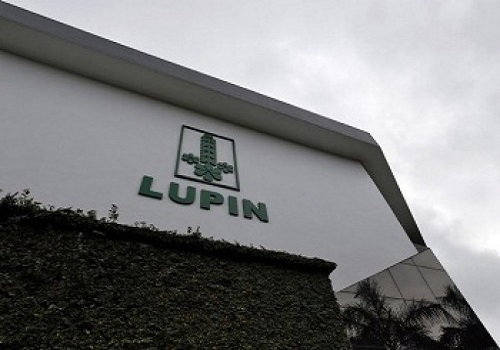Aluminium trading range for the day is 198.5-202.9. - Kedia Advisory

Follow us Now on Telegram ! Get daily 10 - 12 important updates on Business, Finance and Investment. Join our Telegram Channel
Gold:
Gold exhibited a 0.32% increase, closing at 62559, propelled by safe-haven demand amid escalating tensions in the Middle East and growing expectations of an earlier-than-expected rate cut by the Federal Reserve. The prolonged conflict between Israel and Hamas, coupled with the Houthi militia's threats in response to U.S. airstrikes on Yemen, heightened risk sentiments. The unexpected drop in U.S. producer prices in December contributed to lower 10-year Treasury yields, reinforcing speculation of a potential Fed rate cut. Traders are currently pricing in an 81% probability of a Fed rate cut in March, according to CME's Fed watch tool. Despite the robust conditions in the U.S. labor market, concerns persist about stubbornly high inflation, setting a hawkish tone for the first interest rate policy of 2024 on January 31. Gold demand surged in top Asian hubs, particularly in China and Singapore, driven by the approaching Chinese New Year. However, in India, where jewellers awaited more significant price dips, discounts widened, reaching up to $13 an ounce over official domestic prices. Technically, the gold market experienced short covering, with a 3.01% drop in open interest, settling at 8981. Despite a rise of 197 rupees, gold finds support at 62455, with a potential test of 62355. Resistance is anticipated at 62650, and a breakthrough could lead to prices testing 62745.
Trading Ideas:
* Gold trading range for the day is 62355-62745.
* Gold gains due to safe-haven demand caused by tensions in the Middle-East.
* US producer prices unexpectedly fell in December, leading to lower Treasury yields.
* Traders are now predicting an 81% chance of a rate cut by the Fed in March.
Silver:
Silver closed with a 0.2% gain at 72627, driven by renewed optimism about early rate cuts by the U.S. Federal Reserve. The launch of strikes against Houthi movement-linked sites in Yemen by the United States and Britain, alongside Saudi Arabia's call for restraint, added to geopolitical tensions. The latest Producer Price Index (PPI) report revealed an unexpected 0.1% decline in December, falling short of the market's anticipated 0.1% increase. On a yearly basis, prices accelerated by 1%, exceeding the previous month's 0.8% but falling short of the expected 1.3%. Core rates also missed consensus expectations. While the Fed is widely expected to maintain interest rates in the range of 5.25-5.50%, the outlook for rates in March remains slightly hawkish. Fed policymakers, including Raphael Bostic, John Williams, and Cleveland Fed President Loretta Mester, have indicated that an interest rate cut decision in March is premature. Mester emphasized the need for more evidence to be confident in a progressive decline of inflation towards 2%. She noted the importance of maintaining a restrictive monetary policy and highlighted areas such as goods, housing, and shelter costs needing to ease further, along with a slowdown in wage growth. Technically, the silver market experienced fresh buying, with a 2.99% increase in open interest, settling at 22,320. Despite a rise of 147 rupees, silver finds support at 72400, with a potential test of 72170. Resistance is anticipated at 72850, and a breakthrough could lead to prices testing 73070.
Trading Ideas:
* Silver trading range for the day is 72170-73070.
* Silver steadied on renewed hopes for early rate cuts by the U.S. Federal Reserve.
* The United States and Britain launched strikes against sites linked to the Houthi movement in Yemen.
* The US PPI report showed a 0.1% decline in December, falling short of market expectations.
Crude oil:
Crude oil closed down by -0.41% at 6008, influenced by the persistent challenges posed by growing oil production in non-OPEC countries, particularly the United States, and uncertainties in Chinese demand. Despite heightened tensions in the Middle East, investors are currently not perceiving any significant impact on the global oil supply. Notably, a U.S. fighter aircraft successfully thwarted an anti-ship missile aimed at an American Navy vessel in the Southern Red Sea on Sunday. In Libya, protests threaten to shut down additional oil and gas facilities following the closure of the Sharara field last week, which removed 300,000 barrels per day from the market. However, supply concerns are offset by increased oil production in non-OPEC nations. China's crude oil imports for 2023 reached a record high, with customs data indicating a 11% increase compared to 2022, reaching 563.99 million metric tons. This surge in imports reflects recovering fuel demand despite economic challenges. Money managers demonstrated increased bullish sentiment, raising their net long U.S. crude futures and options positions in the week ending January 9, according to the U.S. Commodity Futures Trading Commission (CFTC). Technically, the crude oil market is undergoing long liquidation, with a notable 11.1% drop in open interest, settling at 8219. Despite a decline of -25 rupees, crude oil finds support at 5931, with a potential test of 5855. Resistance is anticipated at 6072, and a breakthrough could lead to prices testing 6137.
Trading Ideas:
* Crudeoil trading range for the day is 5855-6137.
* Crude oil prices dropped due to increased oil production in non-OPEC countries, particularly the US
* Despite tensions in the Middle East, investors do not see any impact on oil supply.
* Protesters in Libya threatened to shut down more oil and gas facilities, following the closure of the Sharara field.
Natural gas:
Natural gas faced a significant decline, settling down by -6.9% at 255.1, primarily driven by weather forecasts indicating a warmer-than-normal turn in late January after an anticipated freeze next week. The prospect of milder temperatures contributed to a drop in demand projections, overshadowing the current freeze that is expected to drive record-high demand. The U.S. Energy Information Administration (EIA) reported that utilities withdrew 140 billion cubic feet (bcf) of gas from storage during the week ended January 5. Meanwhile, China's natural gas imports, including both liquefied natural gas (LNG) and piped gas, saw a 9.9% increase to reach 119.97 million tons in 2023, the second-highest on record after 2021. In the Lower 48 states, average gas output decreased to 107.1 billion cubic feet per day (bcfd) in January from a monthly record of 108.5 bcfd in December. Daily output was on track to decline to a preliminary 10-week low of 104.5 bcfd, showing a small reduction compared to significant losses during previous winter storms in 2022 and 2021. Meteorologists forecasted a shift in U.S. weather conditions, transitioning from mostly warmer-than-normal to colder-than-normal from Jan. 13-21, before returning to mostly warmer-than-normal conditions from Jan. 22-26. Technically, the natural gas market is undergoing long liquidation, evidenced by a substantial 21.13% drop in open interest, settling at 15097. Despite a decline of -18.9 rupees, natural gas finds support at 249.1, with a potential test of 243.2. Resistance is anticipated at 265.2, and a breakthrough could lead to prices testing 275.4.
Trading Ideas:
* Naturalgas trading range for the day is 243.2-275.4.
* Natgas gas dropped on forecasts for the weather to turn warmer than normal in late January
* US EIA reported a withdrawal of 140 billion cubic feet of gas from storage.
* Gas output in the Lower 48 states decreased in January, with daily output expected to reach a 10-week low.
Copper:
Copper experienced a modest increase, settling up by 0.42% at 715.4, primarily bolstered by disruptions in mine-side operations. Notably, a decline in copper charges in China, driven by smelters scrambling for raw materials, poses a potential threat to Chinese firms' margins and could potentially reduce their production of refined copper. The People's Bank of China (PBOC) surprised markets by maintaining its one-year medium-term lending facility rate at 2.5%, despite boosting liquidity injections. This decision defied expectations for further policy easing to support economic growth, highlighting the central bank's balancing act between growth targets and market pressures. China is grappling with deflationary pressures, as evidenced by a 0.3% drop in consumer prices and a 2.7% decline in producer prices in December. Investors are now eagerly awaiting key economic indicators, including Q4 GDP figures, industrial production, and retail sales for December, to gain further insights into the state of China's economy. On a global scale, the refined copper market showed a 53,000 metric tons deficit in October, a slight improvement from the 56,000 metric tons deficit in September, according to the International Copper Study Group (ICSG). Technically, the copper market is undergoing short covering, with a notable 8.8% drop in open interest, settling at 5910. Despite a marginal rise of 3 rupees, copper finds support at 713.9, with a potential test of 712.3. Resistance is expected at 716.6, and a breakthrough could lead to prices testing 717.7.
Trading Ideas:
* Copper trading range for the day is 712.3-717.7.
* Copper gains supported by mine-side disruption.
* China's central bank has boosted liquidity injections but kept interest rates unchanged
* Factory-gate prices in China for metals continue to decline, indicating ongoing deflationary pressures
Zinc:
Zinc closed with a gain of 1.14% at 225.6, driven by significant developments in the industry. Nyrstar's announcement to suspend its Budel zinc smelting operations in the Netherlands in the second half of the month due to high energy costs and challenging market conditions influenced market sentiment. The decision to put the operations on "care and maintenance" indicates a halt in production while allowing for ongoing maintenance, with the possibility of reopening in the future. Budel's annual capacity is 315,000 metric tons, and the smelter has been operating flexibly since Q4 2021. Zinc inventories in Shanghai Futures Exchange-monitored warehouses saw a notable 15.2% increase from the previous Friday, reflecting changes in supply dynamics. Recent data indicating higher-than-anticipated exports from China in December suggests a gradual improvement in trade conditions. In October, the global zinc market deficit eased to 52,500 metric tons from a deficit of 62,000 tons in September, according to the International Lead and Zinc Study Group (ILZSG). For the first ten months of 2023, ILZSG data revealed a surplus of 295,000 tons compared to a deficit of 33,000 tons during the same period in 2022. From a technical standpoint, the zinc market witnessed fresh buying, with a substantial 15.17% increase in open interest, settling at 2854. Despite a rise of 2.55 rupees, zinc finds support at 223.6, with a potential test of 221.5. Resistance is expected at 227.4, and a breakthrough could lead to prices testing 229.1.
Trading Ideas:
* Zinc trading range for the day is 221.5-229.1.
* Zinc gains as Nyrstar to suspend Budel zinc operations in second half of January
* The zinc market is expected to have a surplus in 2024, with output growth surpassing demand.
* The support for zinc comes from hopes of a fuller economic recovery in China.
Aluminium:
Aluminium closed down by -0.77% at 200.05 in cautious trading, as investors awaited key economic data releases from top consumer China later in the week. The aluminium market faced uncertainties regarding the demand outlook after a rate cut by the U.S. central bank regained momentum. China's central bank, despite boosting liquidity injections, surprised the markets by maintaining the one-year medium-term lending facility rate at 2.5%. China continues to grapple with deflationary pressures, with consumer and producer prices falling by 0.3% and 2.7%, respectively, in December. Investors are now looking ahead to Q4 GDP figures, industrial production, and retail sales for December to gain further insights into the country's economic health. Persistent deflationary pressures were highlighted by the prolonged slide in factory-gate prices in China, raising concerns about the prospects for metals demand. Aluminium, a crucial industrial metal, is particularly sensitive to economic trends. Japan sets the benchmark premiums for primary metal shipments each quarter over the London Metal Exchange (LME) cash price. Aluminium stocks at major Japanese ports were at 330,000 tons in November, exceeding the 250,000-300,000 tons considered healthy, indicating potential challenges in the demand-supply balance. Technically, the aluminium market is under fresh selling pressure, with an 8.27% gain in open interest, settling at 4607. Despite a decline of -1.55 rupees, aluminium finds support at 199.3, with a potential test of 198.5. Resistance is expected at 201.5, and a breakthrough could lead to prices testing 202.9.
Trading Ideas:
* Aluminium trading range for the day is 198.5-202.9.
* Aluminium prices dropped due to cautious trading ahead of China's key economic data release
* China's central bank boosted liquidity injections but left interest rates unchanged
* China is grappling with deflationary pressures, with consumer and producer prices falling
Cotton:
Cotton prices remained unchanged at 55600, reflecting stability in the market, as reported by the Cotton Association of India (CAI). CAI estimates domestic cotton consumption for the 2023-24 season to be flat at 311 lakh bales. The pressing estimates for the season are maintained at 294.10 lakh bales. The CAI's observations are based on inputs from members in 11 cotton-growing state associations and other trade sources. The total cotton supply till the end of the 2023-24 season is projected to be 345 lakh bales. Brazil's historic high cotton production in the 2022-23 season, driven by increased cultivation and productivity, has resulted in a rise in global supply. However, sluggish demand due to unfavorable economic conditions has led to bloated inventories and reduced cotton prices worldwide. Reports of a decline in pink bollworm infestation in the Brazilian cotton crop have alleviated some concerns. Brazilian cotton shipments increased by 12% in November compared to October 2023 but decreased by 5.5% compared to November 2022. The International Cotton Advisory Committee (ICAC) predicts that global cotton production will surpass consumption for the second consecutive year. Global cotton lint production is expected to grow 3.25% year-on-year to 25.4 million metric tons in the 2023-2024 season, while consumption is forecasted to marginally decline to 23.4 million metric tons. In the U.S., the cotton balance sheet for the 2023/24 season shows slightly lower consumption, higher production, and ending stocks. Global cotton balance sheets also include lower consumption but higher production and stocks. Technically, the market is under long liquidation, with unchanged open interest at 208, while prices remain steady at 0 rupees. Cotton prices are currently finding support at 37060, and a breach below could test 18530 levels. On the upside, resistance is expected at 37060, and a breakout could lead to prices testing 18530.
Trading Ideas:
* Cottoncandy trading range for the day is 18530-18530.
* Cotton settled flat as consumption in India for the 2023-24 season is estimated to remain flat at 311 lakh bales.
* The total cotton supply in India until the end of the 2023-24 season is estimated to be 345 lakh bales.
* Global cotton production is projected to exceed consumption for the second consecutive year.
* In Rajkot, a major spot market, the price ended at 26511.7 Rupees gained by 0.18 percent.
Turmeric;
Turmeric prices surged by 5.38% to settle at 13634, primarily driven by concerns over potential yield losses due to adverse weather conditions, elevating the risk of crop damage. The market also found support in improved export opportunities, with a 25% increase in exports during Apr-Oct 2023 compared to the same period in 2022. However, the upside is perceived as limited due to slower buying activities in anticipation of stock releases ahead of the commencement of new crops in January 2024. The crop is expected to be ready for harvest from January to March, and current levels of buying activity, coupled with decreasing supplies, are anticipated to sustain price stability. The demand for turmeric has witnessed an uptick in both developed and emerging nations, contributing to the 2.63% increase in exports during Apr-Oct 2023. Expectations of a 20–25% decline in turmeric seeding this year, particularly in key regions like Maharashtra, Tamil Nadu, Andhra Pradesh, and Telangana, are attributed to shifting priorities among farmers. The weather conditions further exacerbate concerns, as the IMD defines average or normal rainfall as ranging between 96% and 104% of the 50-year average. Technically, the market is under fresh buying, evidenced by a 2.82% increase in open interest to settle at 12400, with prices up by 696 rupees. Turmeric is currently finding support at 13106, and a breach below could test 12576 levels. On the upside, resistance is expected at 13932, with a potential breakout leading to a test of 14228.
Trading Ideas:
* Turmeric trading range for the day is 12576-14228.
* Turmeric gains due to the potential for yield losses caused by the crop's unfavourable weather.
* Support is also evident for improved export opportunities.
* However, upside seen limited as buying activities has been slower ahead of commencement of new crops.
* In Nizamabad, a major spot market, the price ended at 12887.6 Rupees dropped by -0.25 percent.
Jeera
Jeera (cumin) witnessed a notable uptick, settling up by 2.98% at 26985, driven by low-level buying following a recent drop in prices attributed to higher production prospects in key cultivating states like Gujarat and Rajasthan. The current rabi season has seen a surge in jeera acreage, reaching a four-year high, with farmers expanding cultivation in response to record prices observed in the previous marketing season. In Gujarat alone, jeera cultivation covers 5.60 lakh hectares, indicating a substantial 160% increase from the previous year's 2.75 lakh hectares, surpassing the normal acreage of 3.5 lakh hectares. Rajasthan has also experienced a 25% increase, reaching 6.90 lakh hectares compared to 5.50 lakh hectares in the previous year. Despite the robust domestic production, global demand for Indian jeera has slumped, as buyers prefer alternative sources such as Syria and Turkey due to the comparatively higher prices in India. Export challenges are anticipated in the coming months, influenced by factors like lower water availability, reduced cold days, and concerns about fusarium wilt attacks on crops. In the major spot market of Unjha, the closing price was 30493.1 Rupees, reflecting a gain of 0.55%. Technically, the market is experiencing short-covering, with a -0.33% drop in open interest to settle at 1833, while prices rose by 780 rupees. Jeera finds support at 26210, and a breach below could test 25430 levels. On the upside, resistance is expected at 27460, and a breakout could lead to prices testing 27930.
Trading Ideas:
* Jeera trading range for the day is 25430-27930.
* Jeera gains on low level buying after prices dropped due to higher production prospects
* In Gujarat, Cumin sowing witnessed very strong growth by nearly 103% with 530,030.00 hectares against sown area of 2022
* Stockists are showing interest in buying on recent downfall in prices triggering short covering.
* In Unjha, a major spot market, the price ended at 30493.1 Rupees gained by 0.55 percent.
Views express by all participants are for information & academic purpose only. Kindly read disclaimer before referring below views. Click Here For Disclaimer












 320-x-100_uti_gold.jpg" alt="Advertisement">
320-x-100_uti_gold.jpg" alt="Advertisement">











